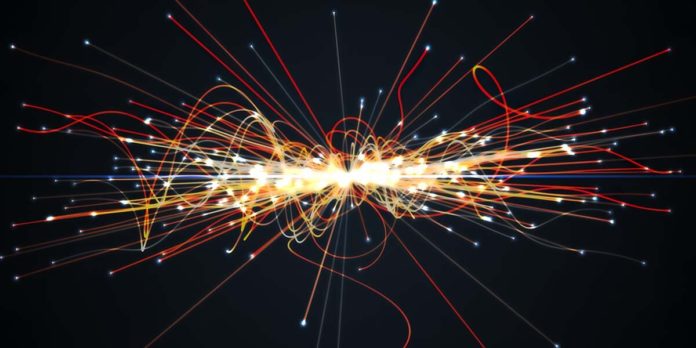Scientists have made a groundbreaking discovery at the world’s largest particle accelerator, the Large Hadron Collider (LHC), located at CERN, the European Organization for Nuclear Research – LiveScience reported.
For the first time, they have detected ghostly neutrinos, subatomic particles that rarely interact with matter, inside the LHC. This remarkable achievement may shed light on the fundamental properties of these elusive particles and help unravel the mysteries of the universe.
The Large Hadron Collider: A Particle Accelerator of Unprecedented Scale
The LHC, a 17-mile (27-kilometer) ring buried beneath the French-Swiss border, is a marvel of modern engineering. It accelerates protons to nearly the speed of light before smashing them together to recreate the conditions that existed just moments after the Big Bang.
By analyzing the debris produced in these high-energy collisions, scientists can probe the fundamental constituents of the universe and explore the nature of the elusive Higgs boson, dark matter, and other phenomena.
The LHC’s immense power has enabled researchers to make many groundbreaking discoveries, such as the confirmation of the Higgs boson in 2012. However, detecting neutrinos inside the LHC remained a challenge due to their elusive nature.
Neutrinos: The Enigmatic Particles That Elude Detection
Neutrinos are subatomic particles that are produced in vast quantities during nuclear reactions, such as those that occur in the sun and in supernovae.
They are incredibly abundant, with trillions of neutrinos passing through our bodies every second. Despite their abundance, neutrinos are notoriously difficult to detect because they rarely interact with matter. They can pass through entire planets without leaving a trace.
A Groundbreaking Discovery: Neutrinos Detected Inside the LHC
In a first-of-its-kind experiment, researchers at the LHC have managed to detect neutrinos produced in the high-energy proton-proton collisions that occur inside the accelerator.
The experiment, called FASERν (pronounced “phaser-nu”), was designed specifically to search for neutrinos in the LHC. The team used a small, cost-effective detector placed 480 meters (1,575 feet) downstream of the LHC’s main collision point.
During the first phase of the experiment, the researchers detected 10 electron neutrino events, a significant accomplishment considering the elusive nature of these particles.
The team expects to observe thousands more neutrino events in the coming years, as the LHC increases its collision rate and the FASERν experiment enters its second phase.
The Future of Neutrino Research at the LHC
The detection of neutrinos inside the LHC opens up a new frontier in particle physics research. By studying these ghostly particles, scientists hope to gain insights into their fundamental properties, such as their mass and their role in the universe’s evolution.
Additionally, neutrino research may provide clues about the nature of dark matter and other cosmic mysteries.
As the LHC continues its mission to explore the uncharted territory of particle physics, the FASERν experiment promises to be an invaluable tool in the quest to understand the enigmatic neutrino.
This groundbreaking discovery is just the beginning, and future research at the LHC may reveal even more astonishing secrets of the universe.












